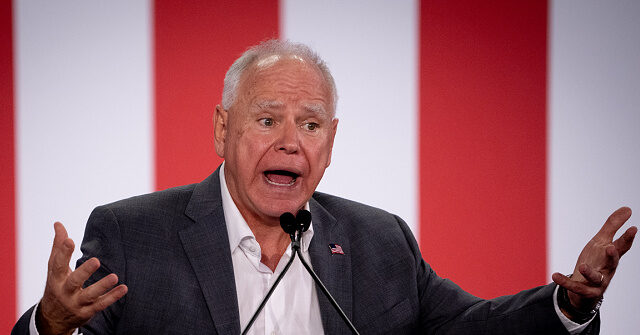During a recent interview, retired NFL offensive lineman and ABC News host Michael Strahan engaged Minnesota Governor Tim Walz concerning his controversial remarks about the Electoral College. Walz expressed a strong desire to abolish the Electoral College, advocating for a national popular vote during a fundraiser with California Governor Gavin Newsom. His statement sparked discussions, especially among political circles, as he emphasized the need for every vote to count in every state, a sentiment that contrasts with the current state-contingent electoral system. Walz’s comments have not only drawn attention but have also led to responses from the Kamala Harris campaign, creating a complex narrative around the proposed electoral reform.
Following Walz’s comments, the Harris campaign quickly took steps to distance itself from his statements. They reiterated their support for the Electoral College, which prompted Strahan to press Walz on the inconsistency between his remarks and the campaign’s official position. Walz’s struggle to clarify his stance caused moments of confusion, as he asserted that while the campaign views may differ, he aimed to highlight concerns about the value of votes across different states. This situation underscores the tension that electoral reform discussions can create within political campaigns, particularly when varying perspectives are brought to the forefront.
Throughout the interview, Walz attempted to delineate between his individual views and the official campaign stance. Strahan pointed out the discrepancy, succinctly encapsulating the confusion by asking whether Walz and Harris disagreed on the Electoral College’s relevance. Walz’s responses emphasized that the campaign strives for unity in conveying that every vote matters. However, the intricacies of his statements highlighted a broader discourse about the effectiveness and fairness of the current voting system and its implications for national representation.
The governor’s comments reflect a growing sentiment among some Democratic leaders who advocate for changing the existing electoral framework, aiming for more direct representation through a popular vote. Walz’s assertion that “all of us know the Electoral College needs to go” indicates a rift that may exist within the party about how to evolve the electoral process. The dialogue surrounding electoral reform encompasses a range of opinions; thus, any calls for change come with complexities related to party unity and the broader implications for democracy.
Moreover, Walz’s situation illustrates the difficulties politicians face when public support for ideas like electoral reform can be polarized. It poses questions about accountability and voter trust in democracy, with many arguing that the current system may disenfranchise voters in less populous states. Conversely, adherents to the Electoral College argue that it protects interests of smaller states and ensures balanced representation nationwide. The intricacies of these viewpoints further complicate the political landscape, making discussions on such reforms even more critical.
In conclusion, the exchange between Strahan and Walz reveals the pressing need for clarity and coherence in political discussions about electoral reform. While the sentiment for change may resonate with a segment of the electorate, political representatives must carefully navigate their messaging to maintain party cohesion and voter trust. As debates about the future of the Electoral College evolve, they serve as a barometer for broader discussions about democracy, representation, and the efficacy of the nation’s electoral processes. Whether changes will materialize or whether existing structures will remain in place remains a pivotal question, influencing American politics for years to come.

